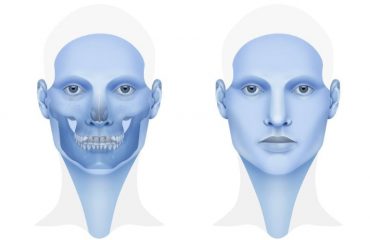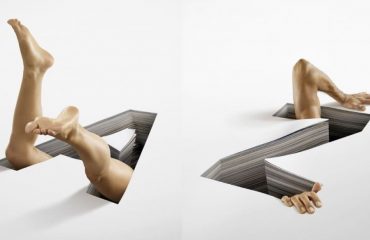
What is Scar Tissue?
Scar tissues usually originate from traumas or injuries of the skin. Scar revisions or scar tissue formation is an important part of the self-healing process of the body. Scars occur as a result of self repairment of skin damages resulting from surgeries, accidents and diseases. Injury of a larger area means a longer healing period. The risk of noticeable scar formation increases with wider sizes of the damage.
The shape and configuration of the scar tissue vary depending on some factors. These factors include the age of the patient, the localisation of the skin damage (i.e., whether on the face or other parts of the body). For example, skin repair would be better for younger people. However, the possibility of scar formation is higher on the chin compared to the cheeks as a result of the skin being tighter on the chin. When the granulation tissue is not needed anymore, veins start to regress and the number of cells decreases. Connective tissue-rich healthy tissue replaces the granulation tissue. These tissues, which sometimes look like a butterfly cocoon, are called “scar tissue.”
If facial scar tissue is extensive, it can cause the facial lines to look more prominent which causes a shadow-like effect. For all these reasons, scar tissue treatment is performed either by cosmetic procedures or plastic surgery.
What are the Types of Scar Tissue?
Scar tissues are usually classified into two types as hypertrophic scar and keloid scar.
- What is a keloid scar?
Keloid is a type of raised scar. Keloid scar tissue is usually thick and irregular. Keloid is generally more extensive than the original wound and is itchy. The scar tissue is generally reddish and darker than the surrounding skin. Keloid scar tissue is an abnormal wound healing and is treated by steroid injections into the wound. This method reduces the reddish colour as well as decreasing the itchiness. In some conditions, steroid injections can even reduce the scar size. If this treatment method does not work, the keloid scar tissue is removed surgically and the wound is sutured. Surgery is performed under local anaesthesia, and patients can start working 1-2 days after the surgery. If the keloid scar is too wide, skin transplantation might be required. Regardless of the treatment method, keloids can return. In such cases, steroid injections are combined with surgery. Pressure garments should be worn after the surgery. The treatment period can last for about a year. Treatment procedures might be required to be repeated once every 2-3 years. - What is a hypertrophic scar?
Hypertrophic scars and keloids are hard to distinguish. Hypertrophic scars are less raised. Hypertrophic scars are confined to the original wound site and usually turn into normal wound healing spontaneously. These are the most apparent differences between hypertrophic scars and keloids. The same treatment methods are applied for hypertrophic scars and keloids. If these tissues are not treated, the scar wound ends up with a bad cosmetic look.
How is Scar Tissue Treated?
Various methods are used to correct or cover the scar. Surgical procedures might be required, but these procedures are usually completed in a short time and under local anaesthesia. During the scar treatment, the depth, length and direction of the damaged tissue are tried to be minimised. However, in most methods, it is impossible to remove the scar entirely and enable the skin to turn into its pre-injury form. The plastic surgeon should decide the process. These treatment methods include the following:
- Dermabrasion
This method is especially used to treat thin lines, small irregularities of the skin, and certain surgical incision scars. Acne scars can be treated with this method. Dermabrasion includes rotating the healthy tissues from the surrounding site over the scar tissue. Irregularity of the scar tissue is removed. This method is used for treating fine lines, freckles, wrinkles, incision scars, and for removing tattoos. Various devices, such as wire brushes or lasers can be used to apply this technique. In facial surgery freezing sprays, pain killers or local anaesthesia can be used. A single session is usually enough. But the number of sessions can change depending on the severity of the lesion. - Collagen Injection
This method, which includes the injection of a natural protein into the scar tissue is used for treating the superficial scars. A close follow-up is needed after the intervention to check the presence of any allergic reactions. - Surgery
Surgery is usually preferred in protruding lesions or lesions which are within the healing period. Extensive scar tissue is removed by incision. In this method, a visible decrease occurs in long scars. In some conditions, the scar tissue is relocated by surgery. This application enables the scar (or a part of the scar) to look more natural and less apparent. Scar tissue being removed to the hairline is an example of this method. Some scar tissues could be surgically removed completely depending on their location and severity. - Chemical Peeling
Chemical peeling includes the removal of the superficial layer of the skin to correct the problematic sites and skin whitening by using chemicals. This method is usually applied to the facial skin. Similar to dermabrasion, chemical peeling is used for treating superficial scars and irregular scars originating from sunburns. This method does not require any local anaesthetic administration. Chemicals are applied to the face from the forehead to chin and cheeks by using a cotton bud. After the chemical application, which takes about 1-1.5 hours to perform, a facial mask is applied, and this mask is removed after 24 hours. Swelling, which is caused by the intervention, takes 1-2 weeks to resolve. In some conditions, skin colour changes occur at the peeled sites. - Tissue Transplantation
Tissue transplantation is used for atrophic scars. The tissue is removed from the back of the ear and patched to the damaged site. At the end of this application, skin appearance looks better than it was previously. - Cortisone Application:
Cortisone application is used for softening the rigid and keloid scars. This makes the scars less noticeable. In this method, cortisone is injected into the scar tissue. - Cryosurgery:
Cryosurgery includes freezing the scar tissue by using liquid nitrogen. This method inhibits superficial tissue growth. This method is usually used for acne scars on the back and shoulder skin.
Scar Revisions Frequently Asked Questions
Consultant Plastic, Reconstructive and Aesthetic Surgeon Professor Yazar is available in his private practice based in Nisantasi, Istanbul for appointments to provide detailed and tailored information on the procedure.





You must be logged in to post a comment.